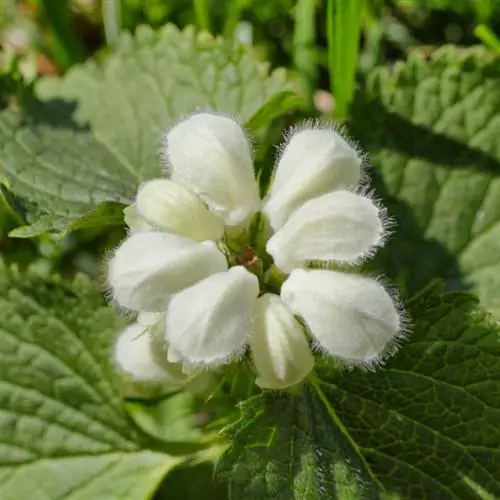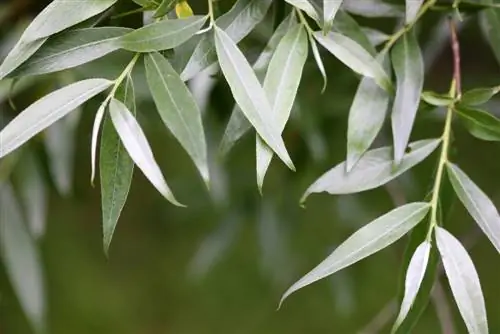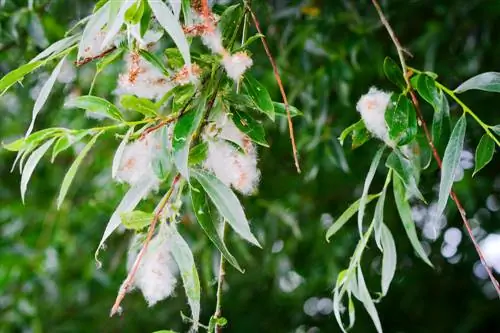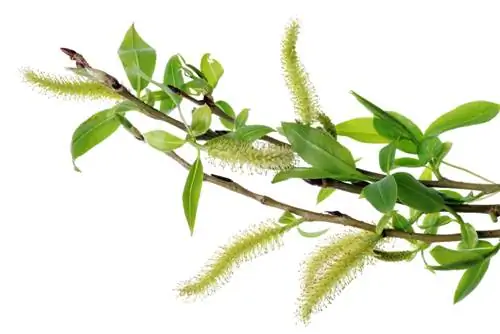- Author admin [email protected].
- Public 2023-12-16 16:46.
- Last modified 2025-01-23 11:20.
For most hobby gardeners it is a 'blind date', the first meeting with the white elderberry. This variety of Sambucus nigra is rare. You can find out what attributes this botanical gem has here.
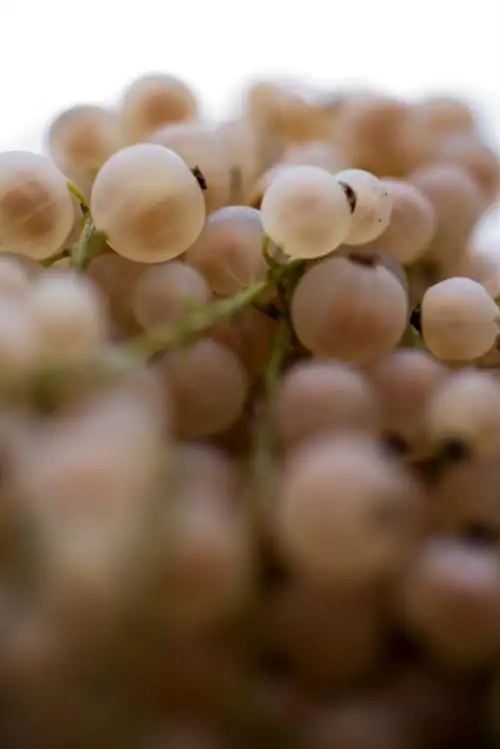
What is the white elderberry and how does it grow?
The white elderberry (Sambucus nigra Alba) is a rare variant of the black elderberry, which stands out due to its yellowish-white, transparent berries and yellow-white flowers. The plant grows 4 to 6 meters high and prefers sunny to partially shaded locations with humus, nutrient-rich soil.
Elderberries that don't color? Yes, there are
The dark fruits of a black elderberry taste so refreshing and aromatic; Hobby gardeners and housewives can happily do without the intense stains. Good to know that there is a type of elderberry whose juice does not stain. When it comes to harvesting white elderberries, no one has to cover themselves completely in plastic to protect them from extremely stubborn dirt. The following profile reveals the most important attributes:
- yellow-white flowers in June and July
- yellowish-white, translucent berries
- light green feathery leaves
- Growth height 4 to 6 meters
- Growth width 3 to 4 meters
- annual growth 20 to 40 centimeters
The almost white elderberries have a touch fruitier taste than the purple-black fruits of their big brother. There is no difference in the toxic content in raw form. Unless the fruits have been cooked at at least 80 degrees Celsius for several minutes, they are not digestible.
Planting and care tips
In order for a Sambucus nigra Alba to develop its up to 20 centimeter large inflorescences in June, it needs a sunny to partially shaded location. Ideally, the soil is not too dry, humic and nutritious. Since a white elderberry doesn't quite reach the impressive dimensions of a black elderberry, it looks great as a solitary plant in the front garden.
Planted in spring or autumn, the decorative wild fruit tree should not dry out if possible. The shrub usually reacts angrily to drought stress by shedding its leaves without much fuss. If the delicious elderberries serve to enrich the diet, white elderberry should be fertilized organically. Compost (€14.00 at Amazon), granulated cattle manure, guano and horn shavings are recommended in this regard. Annual pruning after the harvest maintains vitality.
Tips & Tricks
A singing elderberry in the white elderberry? The Rhenish cheerful natures in Cologne are easily capable of this creative masterpiece. In a rustic pub called 'Weißer Elder', a sing-along concert takes place every Sunday for young and old under the title 'Singing Elder'.


